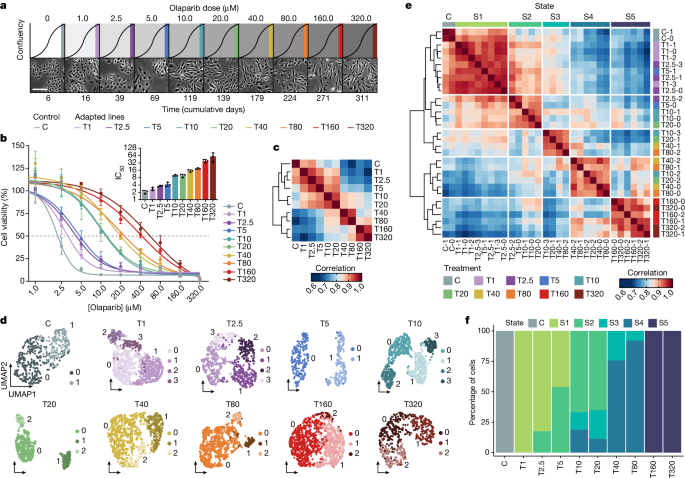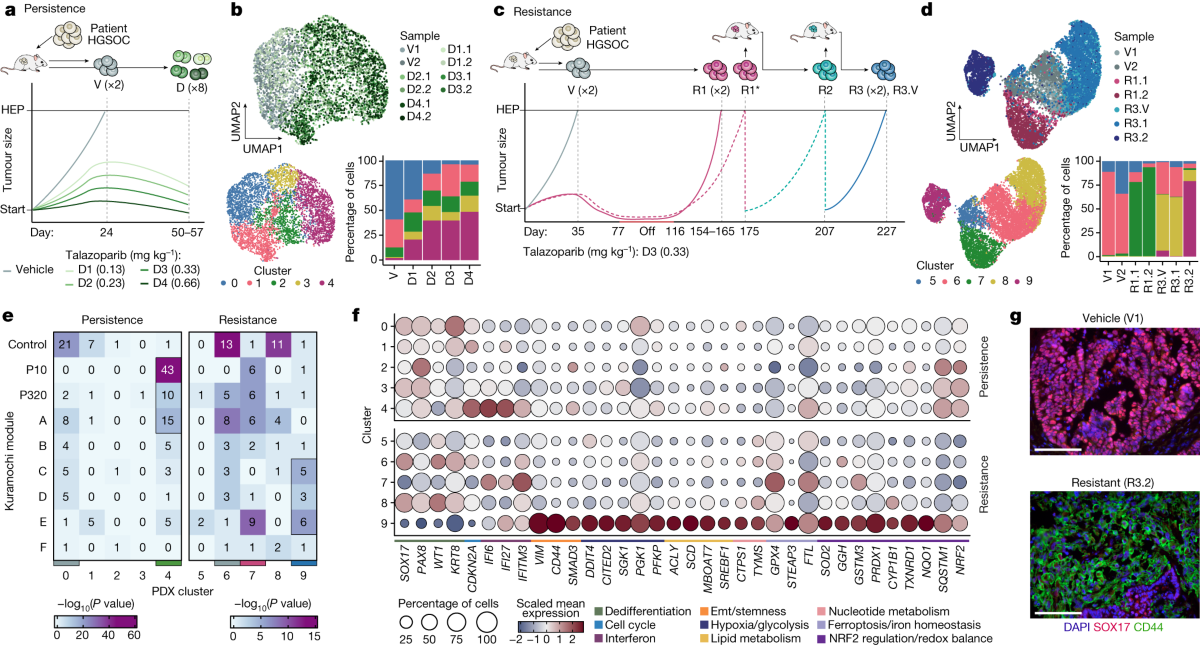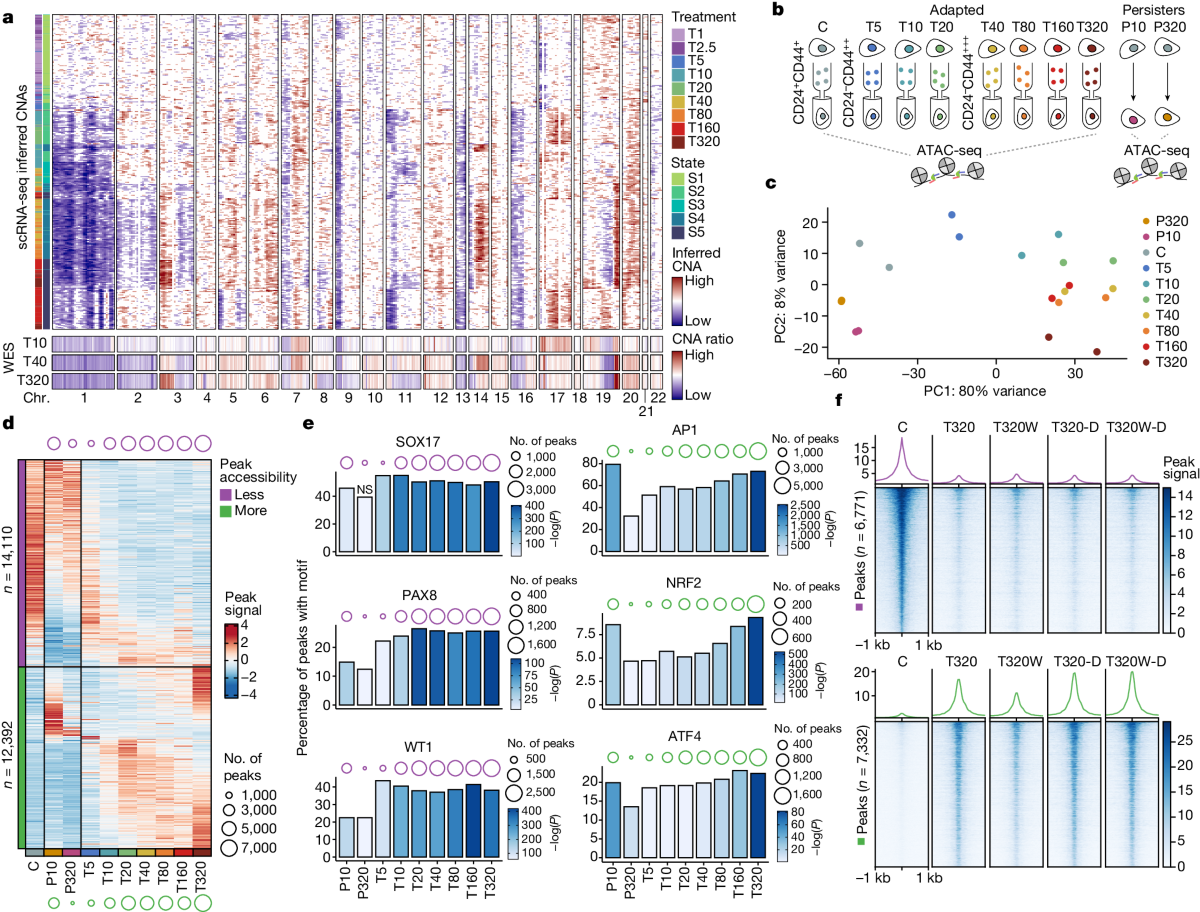Cellular adaptation to cancer therapy along a resistance continuum
Ah, cancer therapy, it’s like tryin’ to swat a bunch of flies with a small net. You think you got ’em all, but they just keep buzzin’ back, tougher than before. See, cancer cells, they ain’t no simple-minded bugs. They’re more like weeds that grow back thicker every time you cut ’em down. These cells, once they get used to a treatment, they don’t just sit around waitin’ to get wiped out. Nope, they get stronger, meaner, tougher. That’s what scientists call this “resistance continuum.” Fancy words, but really just means them cancer cells learnin’ to dodge the meds in steps, gettin’ fitter along the way.
Now, you’d think with all the fancy medicines nowadays, cancer cells wouldn’t have much room to wiggle out of treatments. But these sneaky cells, they got a trick or two. They start off by changin’ their own state, like a caterpillar changin’ to a butterfly, but in a bad way, mind you. At first, the medicine knocks ’em down a peg, but after a while, they kinda figure it out. They change little by little until they’re almost unfazed by the medicine. It’s like they’re takin’ baby steps, learnin’ from every dose that don’t quite kill ’em.
Step-by-step Cell Adaptation: A Process of Learning

Now, let me tell ya how this “learning” thing works in them cells. They ain’t got a brain, of course, but somehow, after a while of gettin’ hit by these treatments, it’s like they start rememberin’. For example, melanoma cells, they can form some sorta “memory.” So, after one treatment, they remember it, like a young’un learnin’ not to touch a hot stove. When the next dose comes, they’re already braced for it.
This kinda memory and gradual changin’ is all part of what they call a resistance continuum. Along this line, these cells go from bein’ weak and vulnerable to downright tough as nails. And these cancer cells? They change in ways that make ’em harder to fight each step of the way. It’s not just one thing they’re changin’; it’s a whole list of tricks. They might block the drug from gettin’ to where it needs to be, or they might toughen up so it don’t affect them like it used to.
How Cells Become Resistant: Them Clever Tricks
- They might change the drug target, makin’ it so the drug just don’t hit the right spot anymore.
- They could make pumps to spit the drug right back out, like you spit out somethin’ that tastes bad.
- They might build up defenses to break down the drug before it even has a chance to work.
- They can just refuse to die – scientists call it “reduced susceptibility to apoptosis.” Fancy words, but it just means they hold on to life tighter than a bull in a rodeo.
- And then there’s the trick of fixin’ themselves up – some cancer cells get real good at repairin’ any damage done by the drugs, like patchin’ up a leak in a roof.
All these changes, it ain’t like they happen overnight. No, these cells slowly adapt along this continuum, each stage making ’em a tad bit tougher, like a boxer trainin’ for the big fight. And by the time you realize they’ve gotten real good at dodgin’ the medicine, it’s like tryin’ to catch water in a sieve. That’s why this continuum thing is such a problem. Each little change means that the next round of treatment has to be even stronger, or completely different, to try to catch ’em off guard.
Adaptive Immune Resistance: Cells Dodgin’ the Immune System

Now, cancer cells don’t just have to dodge the drugs; they also got to dodge the body’s own defenses. See, the immune system usually works like the neighborhood watchdog, sniffin’ out trouble and barkin’ at it. Cancer cells, though, they got ways of slippin’ past this guard dog. They’ll change their look, sorta like a criminal puttin’ on a disguise. This is what they call “adaptive immune resistance.” They spot that the immune system’s sniffin’ around, and they start changin’ how they look so they don’t get picked up on the radar. The T-cells, which are like the immune system’s soldiers, come lookin’ for trouble, but can’t recognize the cancer cells anymore, so they just walk right on by.
This kinda adaptation, it’s almost like the cancer cells are playin’ hide and seek, and they’re real good at hidin’. They learn that if they change themselves just right, the immune system won’t spot ’em as the bad guys. That way, the immune system don’t attack ’em as hard as it ought to. These cells, they’re real crafty, I tell ya.
What Can Be Done About This Resistance Continuum?
Well, all these tricks cancer cells use – from changin’ their state to dodgin’ the immune system – they make cancer a tough nut to crack. Scientists are always workin’ on new ways to stay one step ahead of these cells. Some are lookin’ into combin’ two or three treatments at once, thinkin’ maybe if one don’t get ’em, another will. It’s a bit like tryin’ to catch a mouse in a house; if one trap don’t work, maybe puttin’ out a few more will do the job.
Another idea they’re workin’ on is targetin’ the memory part of these cells. If we can make ’em forget how to dodge the drugs, then maybe they won’t get so resistant over time. Some researchers are lookin’ into how to keep these cells from “rememberin’” past treatments, tryin’ to wipe their slate clean so every treatment hits like it’s the first time. It’s tricky work, but it gives some hope that we might outsmart these cells yet.

Final Thoughts on Cancer Cells and Resistance
In the end, cancer cells are tough little fighters. They ain’t gonna just sit there and take the medicine without puttin’ up a fight. This resistance continuum means that they’ll keep adaptin’ and gettin’ stronger the more we hit ’em. That’s why scientists say we gotta get creative with cancer treatments. It’s not just about hittin’ harder; sometimes, it’s about hittin’ smarter. And maybe one day, we’ll be able to stay one step ahead of these tricky little cells.
Tags:cancer cell adaptation, resistance continuum, adaptive immune resistance, cancer therapy, cell memory







